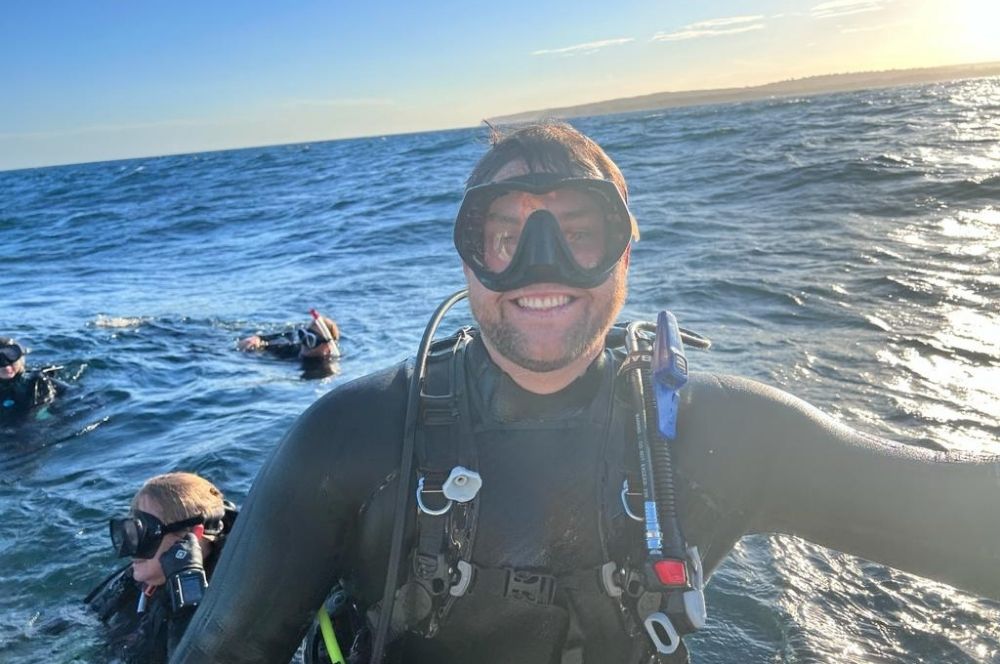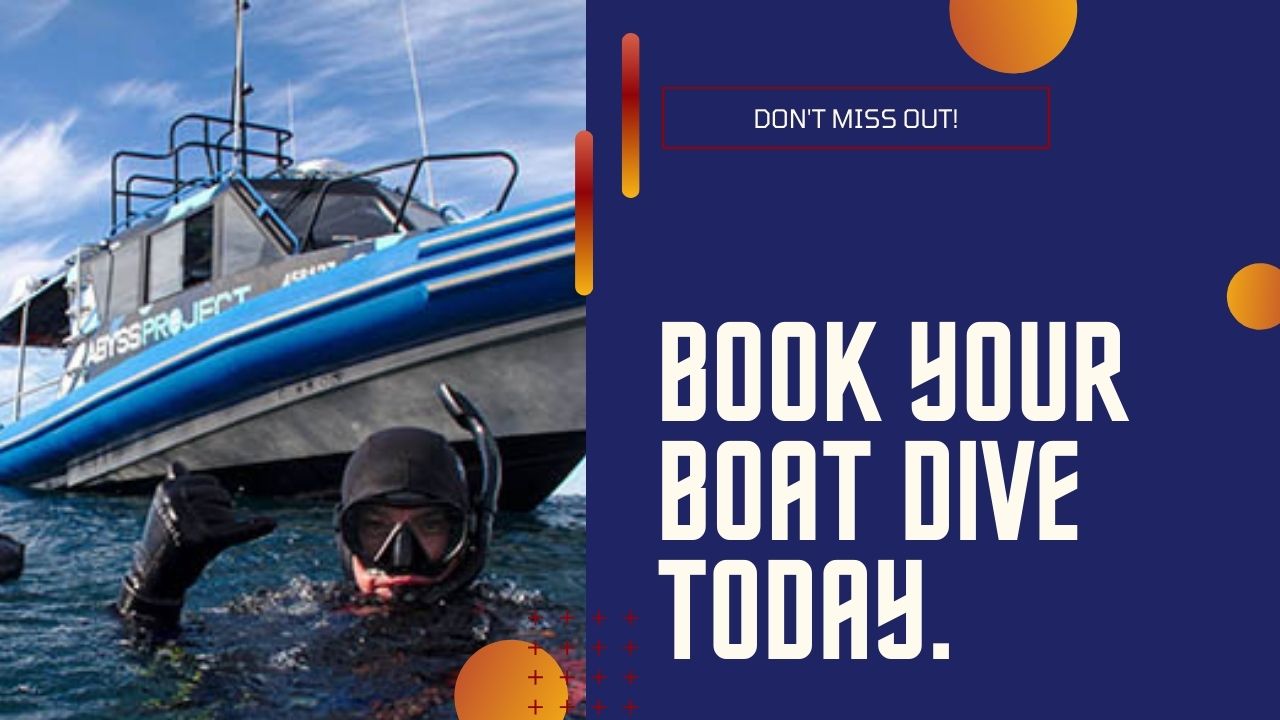You have 0 product(s) in your cart.
Abyss Scuba Diving

A Day Out on the Dive Boat: Advice from Seasoned Boat Divers
If you are new to diving, a day out on the dive boat can be a daunting prospect. What should you expect? What do you need to bring? And most importantly, what will you be doing underwater?
In this post, we will take you through everything you need to know about spending a day out on the dive boat. So, whether you are a first-time diver or an experienced enthusiast, read on for all the information you need for a safe and enjoyable day out on the dive boat.
As a new scuba diver, you might be wondering what the excitement is all about. It would take a book to cover it all! But here are thirteen titbits of advice from seasoned boat divers that can help give you an idea of where to start:
Prepare for the dive
When you are getting ready for your boat dive, make sure to bring along some extra items to ensure a safe and comfortable dive. A windproof jacket to protect you between dives. A small dry bag for keys and phone.
Hair conditioner as there are hot showers on the deck, and it is nice to wash the salt out. Sunscreen, sunglasses, and a hat protect you from the sun.
Be on time
Do not be the diver that makes everyone else on the boat wait or get left behind on the dock! When diving from a boat, aim to arrive at the dive centre and the boat early to sign in, get your equipment, assemble it, and ensure everything is okay. Best of all, avoid feeling rushed so that once you are organized, you can be more leisurely and enjoy what you came to do.
Do your preparation on land.
To avoid missing your dive, make it a habit to check your equipment before getting on the boat. Be sure to have your fins and that you have rented the proper sizes from the dive shop. If you are diving with Abyss Scuba Diving in Sydney, I strongly recommend putting your scuba gear together, turning the air on, testing everything and finally bleeding the air back to fifty bar. Board the boat with your wetsuit half on and wearing your boots.
Ensure you have the necessary critical safety gear, a safety sausage (SMB), a compass and a knife or line cutter.
Anticipate seasickness
If you do not take any preventative measures, you may experience seasickness on your boat dive, particularly if it is your first. The most effective way to solve the issue is to take seasickness medication and adhere to the instructions relating to the time before your journey, dosage and frequency. Make sure to drink plenty of fluids throughout the trip to the dive site and focus primarily on the horizon and breathing in the fresh air.
Remember to Slip, Slop, Slap
Sunscreen is absolutely essential. Sometimes when it is cloudy, you may not think the rays are reaching you, but they will – it is important to remember that the sun's rays are reflected off the water, which magnifies the problem. Around Sydney, the sun is especially brutal, and something inexperienced divers have had to find out the hard way. Remember to slip, slop, slap and repeat the process between dives.
Remember that divers are a friendly, helpful group of people.
Feel free to chat with other divers and ask for their input and advice; they will be understanding of your situation. Bear in mind that they are also there to have an enjoyable time, so do not hesitate to ask them for help if you need it. If there is something about the dive you are unsure of, do not be afraid to ask the divemaster—after all, their job is to ensure you have the best dive experience possible.
Listen to the briefing.
It is critical to listen carefully to the dive briefing. The divemaster will give you helpful information like how to enter the water, where the most interesting features of the dive can be found, the time of the dive, and the maximum depth. You will need to stay updated about specific conditions at the site you may not have been aware of, like transforming currents which can change your dive experience in unpredicted ways.
Plan your dive with your buddy
After the dive brief, sit down and plan your dive with your buddy. It is important that you discuss any potential issues that may arise, such as equalization problems, seasickness, and other hesitations you may have about the dive. You should also take the time to discuss who will be leading the dive, the dive route, and the limitations of the dive (depth, time, air consumption, and safety stop).
Emergency procedures, including procedures for when you lose your buddy, should be agreed upon and understood by both you and your buddy. It is crucial that you not only talk about these procedures but also come to an agreement, so both of you feel comfortable in case of an emergency.
Suit up early
Depending on the length of the boat trip, you may put on your gear on land or about 5 minutes before you reach the dive site. The divemaster will usually tell you when to start. Once you have been told, it is then time to start getting ready if you have not already done so. This will ensure you are ready to get in the water, not keep the other divers waiting and again, you will avoid feeling rushed—you can be more leisurely and enjoy what you came to do.
Fins go on just before the entry.
Unless the boat divemaster indicates otherwise, carry your fins with you and put them on just before entering the water. There is nothing worse than trying to Donald-duck around the boat deck with heavy gear on your back and fins on your feet. Take your fins with you to the dive deck, where the divemaster will help hold you while you use the “figure four” method to put each fin on.
Go down the anchor line.
Once you're in the water, do a buoyancy check at the back of the boat before swimming to the front in case you need more weights. After completing your buoyancy check swim to the front of the boat, and descending from a boat is without a doubt the safest way to go. Always keep your eye on the front to ensure it does not damage your head. Follow the procedures for a 5-point descent.
The Dive
The best way to enjoy a dive is to swim slowly, enjoy the beauty around you, and take your time. It is important to understand the direction you are heading, keep your navigation simple, and monitor your air, dive time, and depth.
The exit back onto the boat needs particular care.
When exiting the water, it is especially crucial to take care near the dive boat ladders, especially when the water is rough. Rather, hang back and hold on to the mermaid line. As much as you may want to cling onto the ladder while waiting to get into the boat after the diver ahead of you, do not do it. He could fall and land on top of you, and if he has his BC and tank on by chance, you could get severely injured.
Boat diving is the way to go if you are looking for an uncomplicated and easy means to dive. Boat diving can offer easy accessibility to dive sites that are further offshore, and you do not have to lug your gear far. Sydney has many great boat dives, and we hope this blog helps you make the most of your boat diving enjoyment.
How Sydney Divers review our dive boat
Recent Posts






